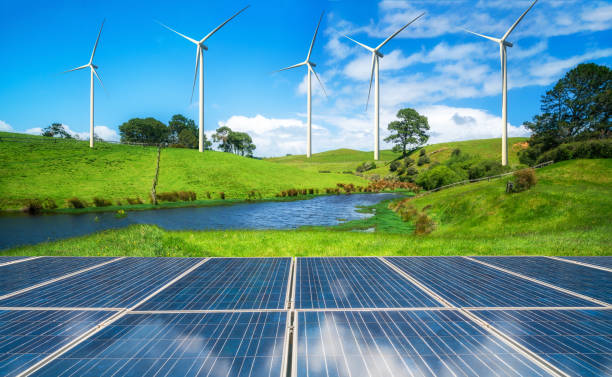Where is Solar Energy Not Available and Why?
Solar energy is a renewable and sustainable power source derived from sunlight, which makes it accessible almost everywhere on Earth. However, there are certain regions and scenarios where solar energy is less viable or entirely unavailable. These limitations are often due to geographical, climatic, and infrastructural factors. In this article, we’ll explore the regions where solar energy is not readily available and the reasons behind these challenges.
1. Polar Regions During Winter (Arctic and Antarctic)
One of the most prominent areas where solar energy becomes unavailable is the polar regions during winter months. These areas experience polar nights, a phenomenon where the sun does not rise above the horizon for weeks or even months. Without sunlight, solar panels cannot generate energy.
Key reason: The Earth’s axial tilt causes prolonged darkness in polar regions during specific seasons, making solar energy impractical during winter.
2. Locations with Frequent Cloud Cover
Regions with persistent cloud cover or high levels of precipitation, such as tropical rainforests (e.g., the Amazon Basin) or areas like Seattle and parts of northern Europe, face challenges in utilizing solar energy. Dense cloud layers significantly reduce sunlight reaching the Earth’s surface, limiting the efficiency of solar panels.
Key reason: Reduced solar irradiance due to constant cloud cover lowers energy output from solar panels.
3. Areas Prone to Extreme Weather
Regions that frequently experience extreme weather conditions, such as hurricanes, sandstorms, or heavy snowfall, are less suited for solar energy installations. For example:
- Deserts with sandstorms (e.g., parts of the Sahara) can damage solar panels and block sunlight.
- Snow-covered regions may face reduced efficiency due to snow accumulation on panels.
- Hurricane-prone areas (e.g., parts of the Caribbean) face risks of solar panel destruction during storms.
Key reason: Weather-related damage or obstruction significantly impacts solar panel performance.
4. Dense Urban Areas with Limited Space
In highly urbanized cities like New York or Hong Kong, the availability of roof space for solar panels is limited. Additionally, tall buildings create shadows, reducing the efficiency of solar installations.
Key reason: Lack of space and shading from skyscrapers hinder the installation and effectiveness of solar panels.
5. Remote Areas Without Infrastructure
Some remote or underdeveloped regions lack the necessary infrastructure for solar energy systems, such as power grids, skilled technicians, or equipment for installation and maintenance. Examples include isolated islands or impoverished rural areas.
Key reason: Lack of access to technology and infrastructure makes implementing solar energy systems challenging.
6. High-Latitude Countries with Low Sunlight Hours
Countries located at high latitudes, such as Norway, Finland, or parts of Canada, receive fewer daylight hours during winter. Even though these countries benefit from long daylight hours in summer, the short and dim winter days significantly reduce solar energy output.
Key reason: Seasonal variations in sunlight duration impact energy generation.
7. Heavily Forested Regions
Areas covered by dense forests, such as parts of the Congo Basin or Southeast Asia, have limited access to direct sunlight. Trees and thick vegetation block sunlight from reaching the ground, making it difficult to harness solar energy effectively.
Key reason: Dense tree cover prevents adequate sunlight from reaching solar panels.
8. Areas Affected by Air Pollution
Regions with high levels of air pollution, such as industrial zones in developing countries or megacities like Delhi, face challenges in utilizing solar energy. Airborne particles, smog, and pollution reduce sunlight penetration, thereby decreasing the efficiency of solar panels.
Key reason: Air pollution blocks or scatters sunlight, lowering the output of solar panels.
9. Deep Valleys and Mountainous Regions
Regions situated in deep valleys or surrounded by high mountains often face limited sunlight due to the shadowing effect of the surrounding terrain. Examples include areas in the Himalayas or parts of the Andes.
Key reason: Geographic features block sunlight, reducing solar energy availability.
10. Regions with High Nighttime Energy Demand
In some areas, the demand for electricity peaks at night, such as during freezing winters when heating systems are required. Since solar panels do not produce energy at night, these regions rely more on alternative energy sources like wind or fossil fuels to meet nighttime energy demands.
Key reason: Solar energy cannot directly meet nighttime energy needs without extensive storage solutions.
Overcoming the Challenges of Solar Energy Availability
While these challenges limit the availability of solar energy in specific regions, technological advancements are continuously improving its viability. Here are some solutions being implemented:
- Energy Storage Systems: Batteries like Tesla’s Powerwall store solar energy for use during nighttime or cloudy days.
- Hybrid Energy Systems: Combining solar with wind or hydroelectric power can compensate for limitations in solar availability.
- Floating Solar Farms: Installing solar panels on water bodies in areas with limited land space.
- Improved Panel Efficiency: Advanced solar panels can generate electricity even in low-light conditions.
Conclusion
While solar energy is one of the most sustainable energy sources, it is not universally available due to geographical, climatic, and infrastructural constraints. Polar winters, dense urbanization, extreme weather, and air pollution are just some of the factors limiting its use in specific areas. However, with ongoing advancements in technology and infrastructure, solar energy is becoming increasingly accessible and practical worldwide.
By addressing these challenges, we can expand the reach of solar power and further its role in creating a cleaner and greener planet.

